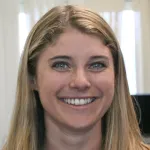report - more from gabv & scharmer
BRAC Bank
Bangladesh
http://www.bracbank.com
Bank History and Summary Strategy
BRAC Bank is a leading private commercial bank in Bangladesh. Its headquarters are based in the
Bangladeshi capital, Dhaka. BRAC Bank was established under the Banking Act of 1991 and incorporated
as a public company limited by shares on May 20, 1999 under the Company Act of 1994. BRAC Bank began
operations in 2001 in order to cater primarily to small and medium enterprises. BRAC Bank is affiliated with
BRAC, the world’s largest non-governmental development organization. BRAC Bank currently maintains 466
different offices across the country.
Organizational Structure and Locations
BRAC Bank started its journey in 2001 and in just 10 years proved to be country’s fastest growing bank.
Today, the bank has 81 Branches, 22 SME Service Centers, 48 SME/Krishi Branches, more than 290 ATMs and
315 stand alone SME Unit offices across the country. It has disbursed over BDT 14,500 crore of SME loan and
has over 1,200,000 individual customers who access online banking facilities. Its services cut across all strata
of clientele - corporate, retail or SME, with their main areas of concentration being:
t� SME Banking
t� Retail Banking
t� Wholesale Banking
t� Probashi Banking
t� E-Banking
Management and Board
BRAC Bank has a board of directors made up of the Chairman - Mr. Muhammad A. (Rumee) Ali, Directors -
Mr. Shib Narayan Kairy, Mr. Quazi Mohammad Shariful Ala, Ms. Nihad Kabir, Dr. Hafiz G. A. Siddiqi, and Ms.
Tamara Hasan Abed, and Managing Director and CEO - Mr. Syed Mahbubur Rahman.
Products and Services
BRAC Bank Limited provides various commercial banking services in Bangladesh and internationally. It
offers retail, corporate, small and medium enterprises (SME), and Probashi banking products and services.
The company’s retail banking products and services comprise various deposit products, including savings
accounts, current accounts, and term deposits; and loan products, such as salary, quick, auto, home, and
secured loans/overdraft; credit card, debit card, and prepaid cards; online banking services; ATM services;
and locker services. Its corporate loan products and services consists of overdraft, term loans, lease
finance, loans against trust receipt, work order finance, project finance, and medium enterprise loans; bank
guarantees; syndicated debt facilities; trade finance products, including letters of credit and guarantee;
corporate cash management services; and custodial services, as well as providing finance to emerging
businesses and purchasing bills. The company’s SME products comprise various deposit products, such as
current accounts; and loan products, including business equity loans, trade finance and suppliers finance.
Its Probashi banking products and services include current accounts, savings accounts, fixed deposits and
bonds.
Ownership
BRAC Bank shares are held in the forms of common stock, preferred shares and publicly issued shares.
Its shareholding structure is divided amongst BRAC, the International Finance Corporation, ShoreCap
International and general shareholders.
42
Major ownership positions in % (over 5%)
2010 2009
BRAC 43.77% 37.18%
International Finance Corporation (IFC) 5.36% 5.83%
ShoreCap International Ltd. 0.86% 6.99%
Financial Summary
BRAC Bank
Reporting Currency: Taka ,000
USD Exchange Rate End of Year 68.35 67.68 67.33 67.11
USD Exchange Rate Average 69.178 68.1391 68.1428 67.096
Reporting Currency 2010 2009 2008 2007
Total Assets 119,150,087 94,581,304 72,441,893 46,382,595
Total Loans 84,058,705 64,084,359 52,665,236 32,446,123
Total Deposits 88,157,907 75,219,615 58,006,887 37,368,408
Total Equity 9,411,886 8,150,954 5,437,525 3,072,028
Equity/Total Asset 7.90% 8.62% 7.51% 6.62%
BIS 1 Ratio 7.43% 9.12% 10.05% 8.33%
Total Loans/Total Assets 70.55% 67.76% 72.70% 69.95%
Total Deposits/Total Assets 73.99% 79.53% 80.07% 80.57%
Total Loans/Total Deposits 95.35% 85.20% 90.79% 86.83%
Total Revenue 9,539,934 7,264,162 6,036,184 3,546,247
Total Non-interest Expense 4,796,643 4,012,291 3,278,875 1,600,754
Net Income (after extraordinary) 1,664,355 874,871 568,761 618,336
Overhead Ratio 50.3% 55.2% 54.3% 45.1%
Return on Assets 1.56% 1.05% 0.96% n/a
Return on Equity 18.95% 12.88% 13.37% n/a
Co-workers (FTE) 7,151 5,907 5,073 3,672
USD Conversion 2010 2009 2008 2007
Total Assets 1,722,370 1,388,062 1,063,089 691,287
Total Loans 1,215,107 940,493 772,866 483,578
Total Deposits 1,274,363 1,103,913 851,255 556,939
Total Equity 136,053 119,622 79,796 45,786
Total Revenue 137,904 106,608 88,581 52,853
Total Non-interest Expense 70,178 59,287 48,698 23,851
Net Income (after extraordinary) 24,350 12,927 8,447 9,213
Note: The information presented is based on the financial statements of the bank. It has been classified to be in a
consistent format for this study but as a result there may be some differences with the financial information reported
by the bank under its accounting rules. The conversion to USD has been done using rates available from http://www.
oanda.com/currency/converter. Balance sheet items have been converted at the year-end rate and income statement
items have been converted using the average rate for the full year






